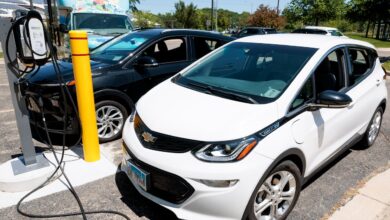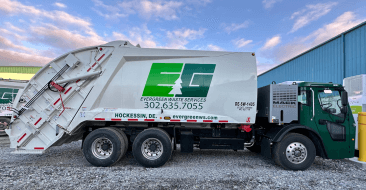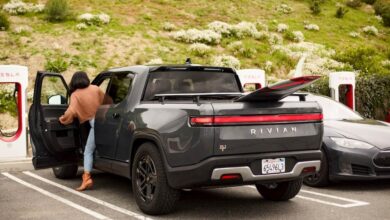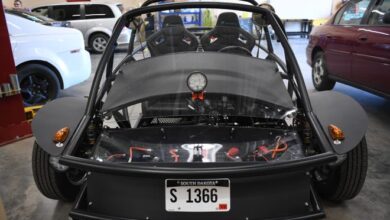Tesla’s biggest problem: cars
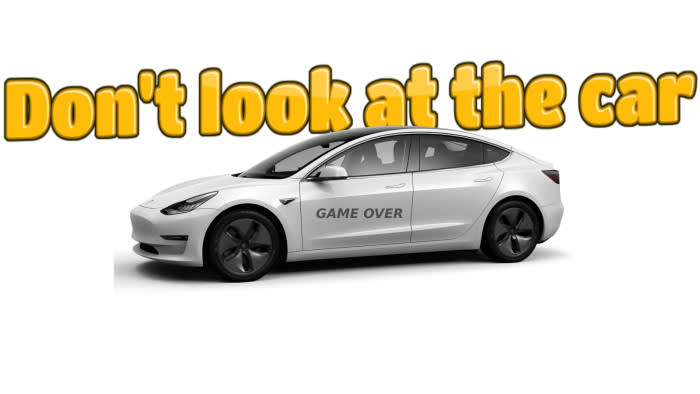
Drew Dickson is the founder and chief investment officer of Albert Bridge Capital. He is short Tesla in his personal account. Albert Bridge Capital holds shares in Porsche SE, which is part owned by Volkswagen.
Tesla’s first-quarter earnings could have been an extreme disappointment to the bulls who just last week, let alone last year, were expecting a much better outcome. True to form, however, CEO Elon Musk used the conference call to talk about anything except their automotive business.
I think Cathie Wood said it best. Like really, we should be thought of as an AI or robotics company. If you value Tesla as just like an auto company [then] fundamentally, it’s just the wrong framework and if you ask the wrong question, then the right answer is impossible.
And:
The way to think of Tesla is almost entirely in terms of solving autonomy and being able to turn on that autonomy for a gigantic fleet. And I think it might be the biggest asset value appreciation in history when that day happens, when you can do unsupervised full self-driving.
Who wants to miss out on the biggest asset value appreciation in history? Not the Tesla Illuminati, who responded jubilantly. At one point on Wednesday morning the stock was up 16 per cent, or more than $80bn in market cap. That’s more than a whole Diageo, or Richemont, or Glencore. It’s also more than an entire Volkswagen, or Stellantis, or Ferrari.
Big intraday moves make it easier to overlook that Tesla’s still down nearly 50 per cent from where it was traded last summer, and that it’s (by far) the worst performing by far of the so-called “Magnificent Seven” year to date.
Instead of addressing the quarter’s decreased unit sales, lower revenues, plummeting earnings, or suffering share price, Musk waxed on about “distributed inference compute”. Regulatory approval for full-self-driving will reveal the similarities between Tesla and AWS, Amazon’s cloud-computing cash cow, he said, later adding that we should “think of [Tesla’s fleet] as a combination of Airbnb and Uber.”
Lie back and think of anything other than Tesla.
Optimus also featured, of course, with Musk described how Tesla should have humanoid robots taking over chores in their factories by the end of the year, and perhaps could be selling them to the general public last next year.
When brought back to the subject of automobiles, Musk wouldn’t be drawn on Tesla’s plans for new models or what specifically was meant by the reference in the results statement to a “more affordable” vehicle.
A cut-price Model 2 was first teased at the 2023 Tesla AGM, with Musk saying in January that it would be in production towards the end of next year, but the expected spring product announcement never came.
Tesla now states it is “accelerating” plans, though as with the Cybertruck it’s easy to mistake the accelerator for the brakes. The notion that a Model 2 might be built in new factories in Mexico or elsewhere have been replaced with vague commitments to retool existing infrastructure and production lines.
Naturally, there was no discussion about where the displaced higher-end cars would be built. And there were no questions from the sellside analysts about reduced potential cost savings, nor what would need to be sacrificed to create the new capacity. When one dared to ask for a detailed product roadmap he was met with silence.
More important were Musk’s Shower Thoughts:
This will be much like elevators. Elevators used to be operated by a guy with relay switch. But sometimes, the guy would get tired or drunk or just make a mistake and send somebody in half between floors. So, we just get an elevator and press button, we don’t think about it. In fact, it’s kind of weird if somebody is standing there with a relay switch. And that will be how cars work. You just summon the car using your phone. You get in. It takes you to a destination. You get out.
In Elon’s mind, the decision about what a car looks like, how much it costs, and what utility it provides doesn’t really matter to people. That kind of thinking might explain the Cybertruck, though even it barely merited a mention beyond a guide that production’s running at 1,000 per week. Observers who were hoping to see at least 250,000 Cybertrucks sold by the end of next year should by now have realised that it’s very unlikely to happen.
But just for giggles, let’s look at how the company actually did this past quarter.
Of Tesla’s total quarterly sales of $21.3bn, 82 per cent were indeed “automotive revenues” while the rest were energy and services. In spite of these numbers Tesla is conceptualised as AI and/or robotics company by some, and thus we might be using the wrong valuation framework, so apologies to the “it’s not a car company” crowd in advance, but:
-
Sequential growth in units sold was down 13 per cent sequentially.
-
Tesla’s price per vehicle, excluding regulatory credits and leasing or finance income, was $38,924.
-
This was down 13 per cent from $44,642 last year, which itself was down 11 per cent from $50,037 the previous year.
Extreme pricing pressure is forcing affordable vehicles on Tesla, irrespective of whether it chooses to launch one. Amid a lack of demand for EVs in general, and Teslas in particular, its quarterly automotive revenues were down nearly 13 per cent over the past year and by over 19 per cent sequentially.
“Clean” automotive margins (which exclude regulatory credits and leasing income) were down from 29.7 per cent in the first quarter of 2022, to 18.3 per cent in the first quarter of 2023, and again to 15.6 per cent in the first quarter of 2024. If you back out the new IRA US tax credits (which Tesla doesn’t seem to disclose) then automotive gross margin looks to have fallen even further, to around 14.1 per cent.
The capex and investment required to keep the machine in first gear meant Tesla burned through $2.5bn of cash in the quarter. Inventories grew by over 10 per cent to $16bn. Consequently, GAAP EPS was down 53 per cent year-on-year, accelerating from the 23 per cent drop in the first quarter of 2023. Even using non-GAAP EPS it’s a 47 per cent decrease over the past year.
In the summer of 2022, when the stock was above $300 share, analysts were expecting Q1’24 EPS of $1.80. Instead, they got $0.45. That is a 75 per cent downgrade to expectations. But with no commensurate downgrade to Elon’s narrative machine, the stock sure isn’t down 75 per cent. Not yet, anyway.
Worth highlighting also is that the recognition of deferred FSD revenues may have helped the EPS number, and unsustainably so. Consequently, we won’t be surprised to see $1.85 of non-GAAP EPS for the full year of 2024, which means Tesla is trading on a forward PE of about 86x. Volkswagen is on a forward PE of less than 5x.
In one way, Musk’s wish has already come true. Tesla is valued like a pure AI and robotics company, even though it isn’t one yet. He may achieve everything that he wants to, but the share price and resulting market cap already assume that this will happen. That’s the danger for those that own the stock.
If the auto business is worth 3 or 4 times the multiple of a Stellantis or Volkswagen, then it would get a forward PE of, say, 20x. That’s more than generous for a business the CEO talks about as a legacy sideline.
Street numbers for Tesla are consistently far too high but even using the 2024 consensus EPS of $2.64, Tesla would be worth just over $50 per share. Using today’s diluted shares (and assuming that they don’t issue more, which they will) that works out to a market cap of $181bn.
Tesla’s fully diluted market cap at pixel time is still $580bn. Simplistically, that means shareholders are already paying around $400bn for corporate experiments in “robotics and AI”, along with anything else Musk has or tries to conjure up.
In order to make money in the stock market, you have to anticipate fundamental developments that exceed those already implicitly baked into the share price. Despite the stock’s fall from grace, I’m afraid that many Tesla shareholders still don’t understand that. In our view, it is going to take a miracle for Tesla shareholders to avoid more pain.
